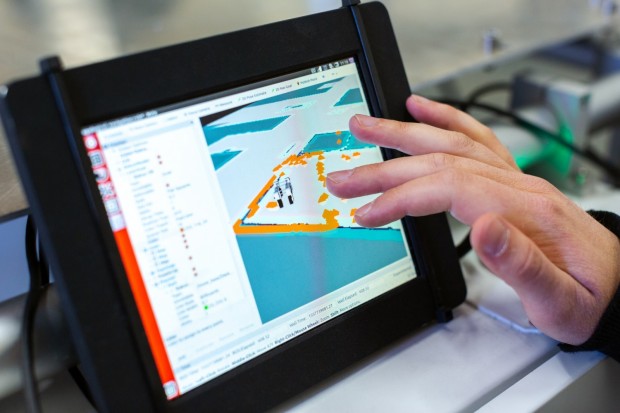Technology in Education: What Will Teach Our Children?
It is difficult to imagine modern classrooms without computers, interactive panels, and tablets. Teachers already implement technologies on a daily basis and notice that they boost effective learning and interest of the students.
Using technologies also helps to improve lesson plans and build skills that are essential for the 21st century. However, they should only assist the teachers in providing special education and motivating students, and not replace tutors. In this article, we are going to discuss learning management systems, AI, and other technologies that have already become a part of the educational routine.
Educational technologies: pros and cons
Education technology or EdTech is a set of tools, programs, and instruments that help students learn and evolve. They have already become a part of the daily academic routine and are not going anywhere. However, can they be a digital distraction and cause more harm than use? Let's try and figure it out by outlining the main advantages and drawbacks.
Pros:
● The material is simpler to master
● Access to tones of information and online sources
● Flexible learning in a group or individually; in the class or online
● They improve digital literacy
● Faster analysis of student performance
● Lower educational costs
● No need to print out the materials (positive impact on the ecology)
Cons:
● Fewer teachers needed
● May be distracting
● Deterioration of the problem-solving skills
● Less human interaction
● Can be quite expensive
Standardized tests
One of the brightest and most common examples of information technology in education is standardized testing. It is applied in almost every school not only in the US but abroad and gives a chance to evaluate obtained knowledge in a fast, accurate, and objective manner. With its help, the education system doesn't overload because teachers don't have to check every test manually. Plus, third-party companies support and maintain the software on their own.
However, many students feel more pressure and anxiety when facing a computer test at the end of the course. The stress and pressure may result in lower grades.
Digital learning and social media
With the help of the Internet, it is much simpler to find and research data, share interesting facts, communicate with classmates, and ask questions even if the teacher is not in the same room. Websites, forums, online databases, and a variety of tools like screen recorders, allow students to share digital materials, track grades and communicate during remote learning and summer breaks.
But many skeptics think that social media in education is extremely harmful. The information online is mostly unreliable and students have access to negative content. But experts believe that the solution to this problem lies on the surface: setting age restrictions and teaching Internet literacy from early grades.
Reading tools
According to statistics, children who read at least 10 books per year show better literacy, comprehension, and analytical skills. Unfortunately, nowadays many parents don't have enough time to read with their children and teachers are unable to dedicate equal attention to every student. This results in poorer reading skills.
To solve the issue, as well as to boost comprehension and tech skills, we are offered various online reading programs that make the process simple and convenient. With their help, children can learn how to read in a fun and entertaining way. At the moment, the best reading programs are ABC Mouse Early Learning Academy, StudyDog Reading, Kiz Phonics, and Headsprout Kids Reading Program.
Learning management systems
The concept of learning management systems is not new. For the first time, it appeared back in 1924 and aimed to simplify the process of managing, reporting, documenting, and tracking training programs, courses, and learning materials. Nowadays, the most popular LMS is Google Classroom which is used by more than 150 million students across the world. It allows sharing files and multimedia, holding classes, and socializing even during online learning. Other examples of learning management systems are Schoology, Its Learning, Kadenze, and EthosCE.
The most significant drawback of such instruments is that the complete functionality is available only for a fee and it may take teachers some time to master the software. Plus, some computers and laptops might have insufficient capacity for the programs.
Smartboards and calculators
Nowadays, almost every classroom is supplied with smartboards, calculators, and other devices aimed to simplify the educational process and make information simpler to master. Many of these instruments allow collecting and analyzing data in real-time, so teachers don't have to evaluate tests and answers after work. Thus, students receive quick feedback and experience a better immersion into the process. And with the help of machine learning, such programs improve automatically.
With the advance of technologies, smartboards and clickers are often replaced with smartphones and tablets. Thus, not only education but other spheres of our lives become more digitalized and convenient.
Other types of educational technologies
The instruments discussed above are only the tip of the iceberg, so teachers and education representatives can choose from numerous technologies based on the task and needs. For example:
● Podcasts to study topics in more detail
● Learning achievements programs (badges, stars, and so on)
● Saving materials for later use with the help of a screen recorder tool
● Gamification for better material digestibility
● Spaces for online cooperative learning (for example, Microsoft Teams)
● Adaptive learning algorithms
● Augmented and Virtual Reality
● Robotics
● Live streaming
● Internet of Things
● Social media platforms
● Voice search

Final thoughts
People have different opinions on whether VR, robotic, and AI usage in education is necessary. Many of them are afraid of fast changes in the industry and can't adjust to them. However, every new technology can improve our skills and knowledge, so should be definitely considered and tested.
Above we have discussed the most popular and common e-learning technologies at the moment. Have you tried some of them? Which one do you like more? Feel free to share your opinion with us!
See Now: NASA's Juno Spacecraft's Rendezvous With Jupiter's Mammoth Cyclone
* This is a contributed article and this content does not necessarily represent the views of scienceworldreport.com





Join the Conversation